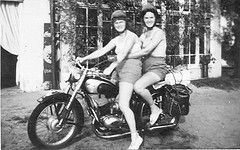 Riding a motorcycle is fun but far too dangerous than driving a car. Motorcyclists are 30 times more likely to have a crash and death risk than people in a car, so, motorcycle safety is too important.
Riding a motorcycle is fun but far too dangerous than driving a car. Motorcyclists are 30 times more likely to have a crash and death risk than people in a car, so, motorcycle safety is too important.
Wearing a Helmet
Be sure to wear helmet with a face shield before riding your bike, it keeps you safe from any head injury. People not wearing helmets are five times more likely to have a serious head injury.
Wearing Appropriate Gear
Wear appropriate gear and clothes to minimize the injuries in case of any crash. Wear leather clothes and boots without non-skid soles and gloves to protect your body from any harm. Using reflective tape to your clothing will make it easier for other drivers to see you.
Following Traffic Rules
You should know the traffic rules and follow them, moreover, follow the speed limit.
Riding Defensively
Turn your headlights on, stay away from dark spots because car or bus drivers usually don’t see the motorcyclists, moreover, use signal while turning your direction and watch other turning vehicles.
Learning Tips
It is beneficial for you if you take a riding education course to keep your skills enhanced. This will help in developing and sharpening your riding techniques and strategies.
Be Awake and Fresh
Be sure you are not drunk while riding. Moreover, drowsiness and fatigue can weaken your ability to react in any sudden situation, so make sure that you are well relaxed when you come on the road.
Avoiding Bad Weather
Avoid riding in bad weather such as in rain because it makes roads slippery, however, if there is any emergency, avoid making any hasty maneuvers and go with little speed, avoid quick brakes and steering to avoid sliding.
Watching for Road Hazards
Watch for pebbles, sand or wet leaves on the road; they can cause the bike to slide away unexpectedly.
Before the Ride
Make sure that your motorcycle is in good working condition, for that check the following:
- Check the tire pressure or any other defects such as cracks or bumps
- Check under the bike for the signs of any gas leakage
- Check the lights if they are functioning well
- Check the levels of hydraulic and coolant weekly
After mounting the bike, check the functions of the following:
- Clutch and throttle should be working smoothly
- Mirrors are clean and adjusted
- Brakes should be firm. Apply them before going on the road
- Horn is working well